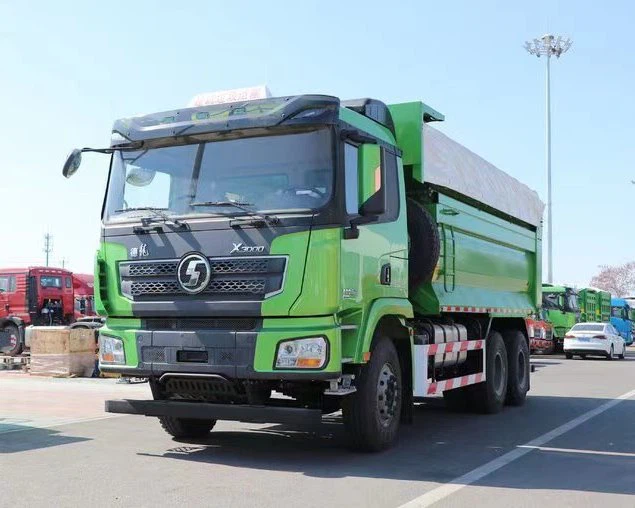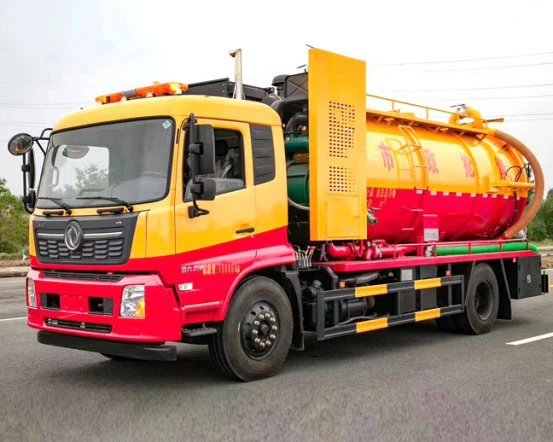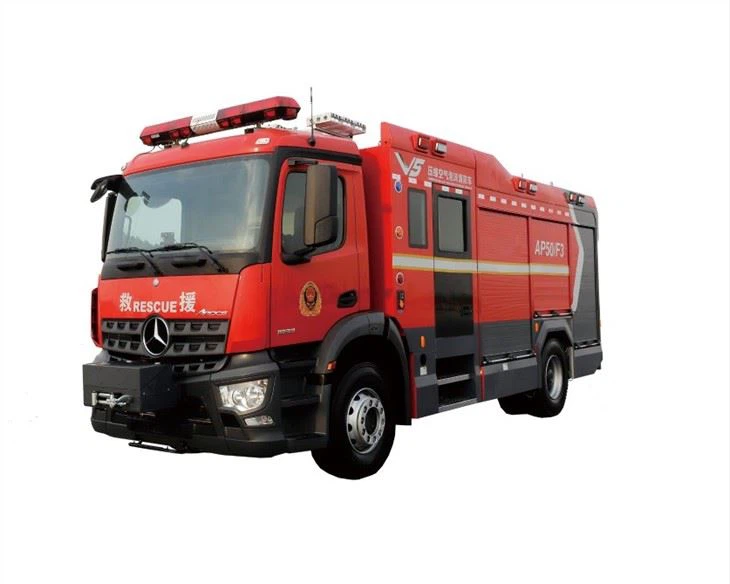Everything You Need to Know About Vacuum Tanker Trucks

Introduction
Vacuum tanker trucks are essential vehicles used across various industries to transport liquid waste, sludge, and other materials. Their unique design and powerful suction capabilities make them ideal for cleaning, drainage, and waste management tasks. This article covers everything about vacuum tanker trucks, including their working mechanism, types, applications, maintenance tips, and much more. Whether you’re in the industry or just curious about this fascinating machinery, this guide is for you.
What is a Vacuum Tanker Truck?

A vacuum tanker truck is a specialized vehicle equipped with a vacuum pump and a large tank designed to suck in, transport, and discharge liquid materials. Commonly used for hazardous and non-hazardous waste management, these trucks are vital for environmental safety and efficient waste disposal. They can be found in various fields, including municipal services, construction, oil and gas, and more.
How Does a Vacuum Tanker Truck Work?
The operation of a vacuum tanker truck involves several crucial components:
- Vacuum Pump: Creates a vacuum that allows the truck to suck up liquids and sludge.
- Tank: The container that holds the waste material during transportation.
- Hose and Nozzle: Used for suction and discharge of the material.
- Control Panel: Allows the operator to manage the suction and discharge processes.
The working process can be broken down into these steps:
- The operator places the nozzle in the desired location.
- The vacuum pump is activated, creating a suction effect.
- The liquid is drawn into the tank.
- Once the tank is full, the operator transports it to a designated disposal location.
- The pump is reversed to discharge the contents safely.
Types of Vacuum Tanker Trucks
While most vacuum tanker trucks share similar basic functionalities, various types have been designed for specific applications.
1. Liquid Waste Tankers
These trucks are designed primarily to transport liquid waste materials such as sewage, industrial waste, and more. They oftenhave tanks made of stainless steel or other corrosion-resistant materials.
2. Sludge Tankers
Sludge tankers are used to transport thick or viscous materials like sludge from treatment plants. They often feature enhanced pumping systems to handle the material’s density.
3. Vacuum Excavators
This type combines the capabilities of a vacuum truck with excavation tools. It’s commonly used for digging and safely removing soil and debris without damaging underground utilities.
4. Portable Restroom Service Trucks
These vacuum trucks service portable toilets, removing waste and emptying them for sanitation purposes. They typically have specialized tanks to handle human waste safely.
Applications of Vacuum Tanker Trucks
Vacuum tanker trucks play a critical role in multiple industries. Here are some of their primary applications:
1. Sewer and Drain Cleaning
Municipalities use vacuum tanker trucks for cleaning sewer lines and storm drains, helping to prevent blockages and flooding. The powerful suction ensures that debris and waste are efficiently removed.
2. Industrial Waste Disposal
Industries produce various liquid byproducts that need safe disposal. Vacuum tanker trucks are essential for collecting and transporting these hazardous waste materials to treatment facilities.
3. Septic Tank Services
Residential and commercial septic systems require regular pumping to function correctly. Vacuum trucks are used to extract waste from septic tanks, ensuring they do not overflow and cause pollution.
4. Environmental Remediation
In environmental cleanup efforts, vacuum tanker trucks are crucial for removing contaminated liquids from spills or site cleanups, ensuring safe disposal and recovery of the environment.
5. Oil and Gas Industries
These trucks are also used in the oil and gas sector for transporting produced water and other liquid waste byproducts, contributing to meeting environmental regulations.
Choosing the Right Vacuum Tanker Truck
Selecting the appropriate vacuum tanker truck can significantly affect the efficiency of your operations. Here are some key factors to consider:
1. Tank Capacity
Choose a tank size suitable for the volume of waste you handle. Common sizes range from 500 to over 5,000 gallons.
2. Pumping Capacity
The vacuum pump’s efficiency is essential for quick operations. PMS ratings indicate the pumping power—higher specs offer better performance.
3. Material of Construction
Durability matters. Stainless steel tanks are excellent for hazardous materials, while aluminum tanks may be suitable for less corrosive substances.
4. Regulatory Compliance
Ensure that the vehicle complies with local, state, and federal regulations regarding waste disposal, especially if handling hazardous materials.
Maintenance of Vacuum Tanker Trucks
Regular maintenance is crucial for the longevity and efficiency of vacuum tanker trucks. Here are some essential maintenance tips:
1. Routine Inspections
Conduct frequent checks on the tank, pump, hoses, and valves to identify wear and tear early. Look for leaks, corrosion, and other damage signs.
2. Clean the Tank
After each use, clean the tank and hoses thoroughly to prevent buildup and contamination of materials. Proper cleaning also helps maintain the quality of the truck.
3. Pump Maintenance
Check the vacuum pump regularly for functionality. Replace worn seals and lubricate necessary parts to keep it in peak condition.
4. Tire and Brake Checks
Like any vehicle, checking tire pressure and brake systems is essential for safety and performance. Regularly inspect and replace them as needed.
5. Follow Manufacturer Guidelines
Always refer to and follow manufacturer maintenance schedules and guidelines for optimum vehicle performance.
Safety Precautions While Using Vacuum Tanker Trucks
Safety should always be a top priority when operating vacuum tanker trucks. Here are vital precautions to keep in mind:
1. Proper Training

Operators should receive comprehensive training on the truck’s operation and best safety practices. Proper education minimizes risks associated with handling hazardous materials.
2. Personal Protective Equipment (PPE)
Always wear appropriate PPE, including gloves, goggles, and suits when dealing with hazardous waste, to protect against spills and splashes.
3. Risk Assessment
Conduct risk assessments before operations, especially in environments with potential hazards. Identify and mitigate risks wherever possible.
4. Emergency Procedures
Establish and communicate clear emergency protocols for spills, equipment failure, or accidents. Regular drills can help staff respond quickly and effectively.
Cost Factors of Vacuum Tanker Trucks
Investing in a vacuum tanker truck involves several cost considerations:
1. Initial Purchase Price
The purchase price is the most apparent cost factor, ranging based on size, features, and equipment. Expect to spend anywhere from $50,000 to over $200,000 for a new truck.
2. Operating Costs
Operating costs include fuel consumption, insurance, and vehicle maintenance, which collectively can account for a significant portion of the budget.
3. Repair and Parts Replacement
Lifespan and wear-and-tear can lead to repair costs. Set aside a budget for unexpected repairs and routine replacements of parts.
4. Regulatory Compliances and Certifications
Investing in compliance and certification can add costs but ensures that your vehicle adheres to safety and environmental regulations.
Practical Examples and Tips for Operating Vacuum Tanker Trucks
- Optimize Route Planning: Efficient route planning reduces fuel consumption and time spent on the road.
- Maintain a Logbook: Keeping detailed logs of operations aids in tracking performance and maintenance needs.
- Use Technology: Implement GPS tracking systems for real-time monitoring of the vehicle’s operations and efficiency.
- Engage in Continuous Learning: Stay updated on industry best practices and regulations through regular training and professional development.
Frequently Asked Questions (FAQs)
1. What materials can vacuum tanker trucks handle?
Vacuum tanker trucks are designed to transport various materials, including sewage, industrial waste, sludge, and clean water, depending on the truck’s specifications.
2. How often should a vacuum tanker truck be maintained?

Routine inspections should be conducted before and after each use, while more extensive maintenance checks should occur based on the manufacturer’s recommendations, typically every few months.
3. Are vacuum tanker trucks expensive to operate?
The operating costs can vary significantly based on usage, fuel prices, maintenance needs, and insurance, but it’s crucial to budget for both initial and ongoing costs.
4. Can vacuum trucks handle hazardous waste?
Yes, many vacuum tanker trucks are specifically outfitted to handle hazardous materials. However, adherence to applicable regulations and safety measures is critical when doing so.
5. How do I know if my vacuum tanker truck is overloaded?
Overloading can be determined by monitoring weight limits specified by the manufacturer, as well as indicators like changes in the truck’s handling and performance while driving.
6. Can vacuum tanker trucks be used for non-waste applications?
Yes, vacuum tanker trucks can be used for non-waste applications, such as transporting clean water or for industrial processes requiring liquid removal.
